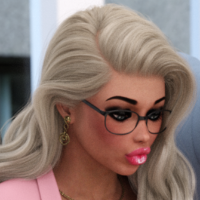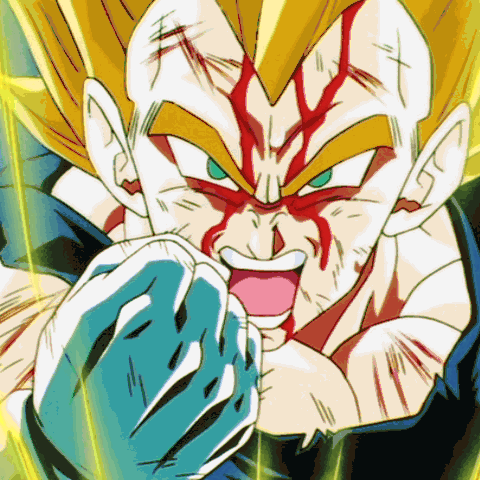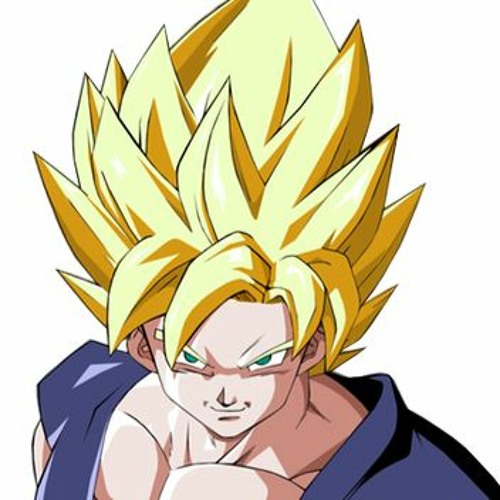Kanzentai's Dragon Ball Kai Remastering Guide
Moderators: Kanzenshuu Staff, General Help
Kanzentai's Dragon Ball Kai Remastering Guide
They've done it again! Another brilliant look into the creation of the series comes from Kanzentai to save the day! It's a fascinating look into the series, for those concerned, detailing everything from the remastering process to the creation of the final product. I found it really interesting that Toei actually made that doctored photo in the Dragon Book. I can't believe they didn't think anyone interested enough in the specific colors wouldn't notice that the Blu-ray didn't look like that. Then again, maybe it really was just what they wanted it to look like, but fell short? Additionally, I found it interesting that the analog broadcast is 480p, while the HD broadcast is interlaced. I guess this is a space-related issue?
I was also pretty surprised to find out how involved Fuji TV was in production, but then again, if they're going to be broadcasting it, I suppose Toei would need to know what they can and cannot produce.
I was also pretty surprised to find out how involved Fuji TV was in production, but then again, if they're going to be broadcasting it, I suppose Toei would need to know what they can and cannot produce.
- Metalwario64
- Born 'n Bred Here
- Posts: 6181
- Joined: Thu Feb 07, 2008 1:02 am
- Location: Namek
Re: Kanzentai's Dragon Ball Kai Remastering Guide
Looks like Toei took a cue from FUNimation's Z Season Set advertising campaign.JulieYBM wrote:I found it really interesting that Toei actually made that doctored photo in the Dragon Book. I can't believe they didn't think anyone interested enough in the specific colors wouldn't notice that the Blu-ray didn't look like that. Then again, maybe it really was just what they wanted it to look like, but fell short?
"Kenshi is sitting down right now drawing his mutated spaghetti monsters thinking he's the shit..."--Neptune Kai
"90% of you here don't even know what you're talking about (there are a few that do). But the things you say about these releases are nonsense and just plain dumb. Like you Metalwario64"--final_flash
"90% of you here don't even know what you're talking about (there are a few that do). But the things you say about these releases are nonsense and just plain dumb. Like you Metalwario64"--final_flash
Re: Kanzentai's Dragon Ball Kai Remastering Guide
This is a really nice article. I'm glad you mentioned this:
The fact that DVD is sort of a hybrid resolution probably has no correlation to the reason they chose to make the DVDs widescreen at all. DVDs are actually closer to 4:3 resolution natively; 720x480 being resized to 640x480 or 720x540... whichever you want to say. 4:3 material generally looks better on DVD, because there's less stretching. 853x480 from 720x480 is a stretch of 133 pixels, while going to 720x540 is 60 pixels. Most DVD players of the current generation automatically check the anamorphic bit for you as well, so there's no reason why it wouldn't be pillarboxed on its own by the system.
If there's any reason why they decided to put it out on widescreen for DVD, it's either something like viewer stupidity or them wanting to make it seem modern.
The one bit that makes no sense though:While you should never compare video production to print production,
Is this what's actually written in the guide you referenced from, or your own inference? Either way it's highly confusing and inaccurate.Of particular note is the Blu-ray encoding, which unlike DVD supports true 16:9 resolutions, meaning widescreen video can be displayed non-anamorphically with square pixels. Hence, this is reason that fullscreen video on Blu-ray is pillarboxed and not anamorphically like DVD encodings.
The fact that DVD is sort of a hybrid resolution probably has no correlation to the reason they chose to make the DVDs widescreen at all. DVDs are actually closer to 4:3 resolution natively; 720x480 being resized to 640x480 or 720x540... whichever you want to say. 4:3 material generally looks better on DVD, because there's less stretching. 853x480 from 720x480 is a stretch of 133 pixels, while going to 720x540 is 60 pixels. Most DVD players of the current generation automatically check the anamorphic bit for you as well, so there's no reason why it wouldn't be pillarboxed on its own by the system.
If there's any reason why they decided to put it out on widescreen for DVD, it's either something like viewer stupidity or them wanting to make it seem modern.
My favorite movie henchman is Sancho.
Follow my stupid crap on Twitter. Please note, I do not have time to reply to any PMs about color correction methods anymore; sorry about that.
[ Hoyoyo! Please pick up our Dr. Slump DVD! ]
Follow my stupid crap on Twitter. Please note, I do not have time to reply to any PMs about color correction methods anymore; sorry about that.
[ Hoyoyo! Please pick up our Dr. Slump DVD! ]
- MCDaveG
- Born 'n Bred Here
- Posts: 5629
- Joined: Fri Aug 05, 2005 5:54 pm
- Location: Prague, Czechia
- Contact:
Re: Kanzentai's Dragon Ball Kai Remastering Guide
Yeah, about those shots, it's clear you can't compare printed material with TV or PC screen. Because digital devices with screens are using RGB colour model which is based on ''daylight'' by it's nature (red, green, blue), printed colours can't work as ''light'' colours so they are assembled from CMYK model (azure, magenta, yellow, black) and the same picture differ a lot in tone and lights of the differen models + graphics are editing the image even more managing the light and shadow (from black to white = gradation - black max. 95%, white 3-5% and with colour images, where each colour has it's own gradation to white, is a lot more difficult) and some retuché to reach the best possible outcome from the print. So the actual shot of film or series footage is no more actual shot, but good picture to look on 
That's how it works in the industry of phototypographics and lot of these things have set international standards. As the name says, it's industry after all
In our expensive huge books we have at home, about Star Wars and Kubrick, the stills from movies are also vastly edited and enhanced in there.
That's how it works in the industry of phototypographics and lot of these things have set international standards. As the name says, it's industry after all
In our expensive huge books we have at home, about Star Wars and Kubrick, the stills from movies are also vastly edited and enhanced in there.
FighterZ: Funky_Strudel
PS5: Dynamixx88
PS5: Dynamixx88
- Hujio
- Kanzenshuu Co-Owner & Administrator
- Posts: 2496
- Joined: Tue Jan 13, 2004 1:28 pm
- Location: Nebraska
- Contact:
Re: Kanzentai's Dragon Ball Kai Remastering Guide
First off, I think you're reading way too much into what I was saying. Secondly, nothing concerning the broadcast or home video release is mentioned in the Dragon Books. All they say is it goes to broadcast on TV, so I included all of the information we knew about the various encodings. Anyway, all I was discussing was the pillarboxing on the Blu-rays. No where did I mention why they chose to make the DVDs widescreen, nor was I making any statement about it. The fact is, since DVDs are all encoded at 720x480, whether it be widescreen or fullscreen footage, they must be stretched in some way when inserted into a DVD player. However, since Blu-rays are encoded at a true 16:9 resolution there is no stretching at all, ever. The pillarboxes on Blu-rays are actually part of the encode, whereas on DVDs any pillarboxes are created by the DVD player itself (just blank area basically). That's all I was discussing, since I had noted that the Blu-rays were encoded as widescreen but contained fullscreen video. But just so there's no confusion in the future, I'll update that section to clarify it a little better.Ashura wrote:Is this what's actually written in the guide you referenced from, or your own inference? Either way it's highly confusing and inaccurate.
The fact that DVD is sort of a hybrid resolution probably has no correlation to the reason they chose to make the DVDs widescreen at all. DVDs are actually closer to 4:3 resolution natively; 720x480 being resized to 640x480 or 720x540... whichever you want to say. 4:3 material generally looks better on DVD, because there's less stretching. 853x480 from 720x480 is a stretch of 133 pixels, while going to 720x540 is 60 pixels. Most DVD players of the current generation automatically check the anamorphic bit for you as well, so there's no reason why it wouldn't be pillarboxed on its own by the system.
If there's any reason why they decided to put it out on widescreen for DVD, it's either something like viewer stupidity or them wanting to make it seem modern.
And to MCDaveG's comment, I really wanted to drive home the point that you shouldn't compare between the two mediums, but clearly it can be seen that one is blue and the other is green. I don't think there's much debate there. Especially when you know that the Dragon Box DVD footage is so close in color to the original master film, but the Kai Blu-ray footage is so far off from supposed corrected Kai remaster footage. Something has to be going on there. It can't just attributed to the difference in mediums, because the varying differences within each medium don't even match themselves.
Re: Kanzentai's Dragon Ball Kai Remastering Guide
Hujio; Re-reading it, I see where I messed up royally and actually inferred something totally wrong from what you wrote so my apologies. Especially since when I then re-read what I wrote... it came out all witch-hunty. Ahhh the wonders of reading the internet in the morning with low blood sugar! So my bad.
More information on that front is good though.
MCDaveG, Re: Printing, as someone who works in printing every day... I think the note is good enough. I don't think he needs to explain CYMK vs. RGB; the thing you battle more with print than colors is getting the toning right since it's a very meticulous process to color match and usually 'close enough' is okay for most vendors unless it's a very specific branding line. (IE: Everything on Nintendo packaging that has that blue for Wii or Red for DS is a specific pantone color, because it's a solid color and it has to match on every package... whereas screenshots on those packages are printing CYMK and differ slightly if you really studied them.)
Light/Dark is more important generally, since things get lost if they're too dark. Thus, most screencaps of just about anything are brightened up before they go to print, and then you also have to take into account if it's being surrounded by something dark or light.
To be honest, when going from an RGB source -- like their original capture -- and changing it to standard CYMK SWOP, most bright blues end up /becoming/ that dingy dark of the Dragonbox picture ironically enough. It's easier to get that bright blue in the scan in RGB than it is CYMK if that makes sense? So it's very deliberate; whoever doctored that shot likely redid the sky with a specific cymk blue value to get it juuuust right.
More information on that front is good though.
MCDaveG, Re: Printing, as someone who works in printing every day... I think the note is good enough. I don't think he needs to explain CYMK vs. RGB; the thing you battle more with print than colors is getting the toning right since it's a very meticulous process to color match and usually 'close enough' is okay for most vendors unless it's a very specific branding line. (IE: Everything on Nintendo packaging that has that blue for Wii or Red for DS is a specific pantone color, because it's a solid color and it has to match on every package... whereas screenshots on those packages are printing CYMK and differ slightly if you really studied them.)
Light/Dark is more important generally, since things get lost if they're too dark. Thus, most screencaps of just about anything are brightened up before they go to print, and then you also have to take into account if it's being surrounded by something dark or light.
To be honest, when going from an RGB source -- like their original capture -- and changing it to standard CYMK SWOP, most bright blues end up /becoming/ that dingy dark of the Dragonbox picture ironically enough. It's easier to get that bright blue in the scan in RGB than it is CYMK if that makes sense? So it's very deliberate; whoever doctored that shot likely redid the sky with a specific cymk blue value to get it juuuust right.
My favorite movie henchman is Sancho.
Follow my stupid crap on Twitter. Please note, I do not have time to reply to any PMs about color correction methods anymore; sorry about that.
[ Hoyoyo! Please pick up our Dr. Slump DVD! ]
Follow my stupid crap on Twitter. Please note, I do not have time to reply to any PMs about color correction methods anymore; sorry about that.
[ Hoyoyo! Please pick up our Dr. Slump DVD! ]
Re: Kanzentai's Dragon Ball Kai Remastering Guide
Sorry to double post, but I just thought of this; if you're adding information, it might be interesting to explain a little bit about why they had to redo all the ki shots and effects stuff. IE: the rules of how fast images can flash in animation changing due to the Pokemon incident. This is likely why they redrew stuff like the Ginyu Force's intro which originally had flashing colors in the background.
There's this one episode I remember during the Goku and Vegeta fight where 99% of the Funi episode is the background flashing and my old huge TV would always make this awful whine if I watched it. It has to be worse than Electric Soldier Porygon in terms of flickering, really. When they announced how Kai was being built I was like... I bet most of that episode is gone even if isn't filler!
There's this one episode I remember during the Goku and Vegeta fight where 99% of the Funi episode is the background flashing and my old huge TV would always make this awful whine if I watched it. It has to be worse than Electric Soldier Porygon in terms of flickering, really. When they announced how Kai was being built I was like... I bet most of that episode is gone even if isn't filler!
Last edited by Ashura on Fri Jul 29, 2011 1:54 pm, edited 1 time in total.
My favorite movie henchman is Sancho.
Follow my stupid crap on Twitter. Please note, I do not have time to reply to any PMs about color correction methods anymore; sorry about that.
[ Hoyoyo! Please pick up our Dr. Slump DVD! ]
Follow my stupid crap on Twitter. Please note, I do not have time to reply to any PMs about color correction methods anymore; sorry about that.
[ Hoyoyo! Please pick up our Dr. Slump DVD! ]
Re: Kanzentai's Dragon Ball Kai Remastering Guide
Something that just occured to me, the clip provided of Nozawa and Horikawa isn't the actual recording of the scene used in Dragon Ball Kai episode #13. I think it might be a good idea to note that the performance was just done for the purpose of showing off for the camera.
- Gaffer Tape
- Born 'n Bred Here
- Posts: 6108
- Joined: Tue Dec 08, 2009 5:25 pm
- Contact:
Re: Kanzentai's Dragon Ball Kai Remastering Guide
As usual, awesome guide. The only nitpick I have is that you state that all of the masters for DBZ are at least 20 years old. While that will be true in a few years, it's not entirely true now, and it certainly wasn't during Kai's production. The show premiered around the 20th anniversary of the beginning of Z and moved at a much faster pace than Z, which means that while the oldest footage would have been just around 20 years old when they were working on them, each subsequent portion of the series would have been younger than 20 years old, with them reaching progressively newer footage as the series continued. So while what they were working on at the beginning of the series was only just 20 years old, what they were working on two years later at the end of the series is only 18 years old, which certainly isn't "at least 20 years old."
Do you follow the most comprehensive and entertaining Dragon Ball analysis series on YouTube? If you do, you're smart and awesome and fairly attractive. If not, see what all the fuss is about without even having to leave Kanzenshuu:
MistareFusion's Dragon Ball Dissection Series Discussion Thread! (Updated 5/19/25!)
Current Episode: The Origin of Modern Dragon Ball - Dragon Ball Dissection: Heya! Son Goku and His Friends Return!!
MistareFusion's Dragon Ball Dissection Series Discussion Thread! (Updated 5/19/25!)
Current Episode: The Origin of Modern Dragon Ball - Dragon Ball Dissection: Heya! Son Goku and His Friends Return!!
- Hujio
- Kanzenshuu Co-Owner & Administrator
- Posts: 2496
- Joined: Tue Jan 13, 2004 1:28 pm
- Location: Nebraska
- Contact:
Re: Kanzentai's Dragon Ball Kai Remastering Guide
Actually, I thought I had noted that. So I guess I will have to add that.JulieYBM wrote:Something that just occured to me, the clip provided of Nozawa and Horikawa isn't the actual recording of the scene used in Dragon Ball Kai episode #13. I think it might be a good idea to note that the performance was just done for the purpose of showing off for the camera.
Always leave it to Gaffer to find the nit-pickiest mistake. Unfortunately I'm just as nit-picky, so I'm forced to change it on principle. Thanks, man!
- songohan619
- Patreon Supporter
- Posts: 1442
- Joined: Thu Jul 08, 2010 5:17 am
- Location: Askøy, Norway
Re: Kanzentai's Dragon Ball Kai Remastering Guide
Where did you get the pictures for the Offline Editing? I really want a bigger version of this:


Also known as "GeniDude" and "NerdyNorwegian"!
- Hujio
- Kanzenshuu Co-Owner & Administrator
- Posts: 2496
- Joined: Tue Jan 13, 2004 1:28 pm
- Location: Nebraska
- Contact:
Re: Kanzentai's Dragon Ball Kai Remastering Guide
That is a scan from the first Dragon Book. Since it's such a small image in the book itself the scan is quite pixelated when blown up to anything larger than what I used.songohan619 wrote:Where did you get the pictures for the Offline Editing? I really want a bigger version of this:




